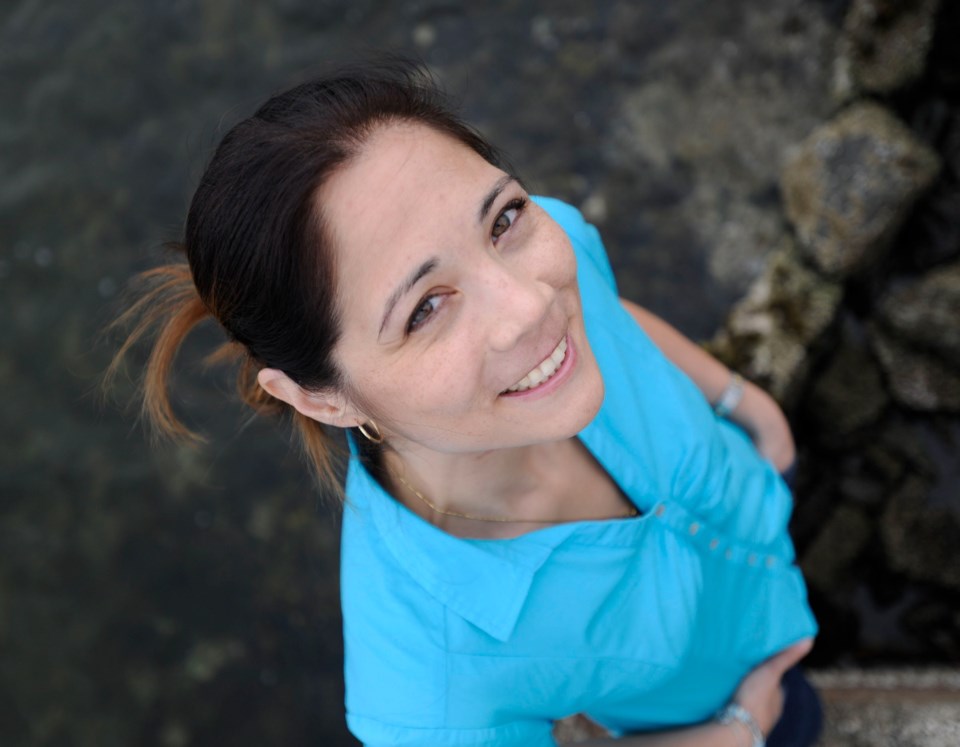To treat her severe neck pain, free-diver Jill Yoneda faced the possibility she would never again glide in the ocean to depths of 55 metres.
In 2012, three herniated discs forced the Victoria native to take a break from her sport and consider her options for treatment.
She was told the “gold standard” would involve fusing two vertebra together with bone grafts, severely limiting her mobility forever.
“Having a neck full of pins and plates and losing the ability to move was a nightmarish thought for me,” said Yoneda, a member of the Canadian Freediving Team who has been described as one of the best freedivers in Canada.
Spinal flexibility is supreme in the sport, during which the athlete takes a huge gulp of air and swims deep down in the ocean or way out in a pool lane, using one fin to propel herself with her arms stretched past her head.
Another aspect of the sport is called static apnea, or simply holding one’s breath.
Yoneda made the Canadian team in 2006, 2008 and 2012 and has held three world records for dynamic apnea, the pool swim. Her personal best is 150 metres, and she can hold her breath for five minutes and 35 seconds.
Freediving carries the attendant risk of blackouts, heart attacks, oxygen poisoning and drowning. But it was Yoneda’s degenerative disc disease that nearly stopped her career at 38.
“The hypothesis is because I’ve been a competitive swimmer my entire life and diving for so long, it could just be wear and tear,” she said.
One doctor told her she had the spine of an 80-year-old. Another told her to start living a life more suitable to her age — discouraging, she said, because “I didn’t think 38 was an old age.”
But rather than ask her to give up her beloved sport, a neurosurgeon at Victoria General Hospital proposed a new treatment upon viewing an MRI scan: instead of fusing the bones together, he could try disc implants between vertebra 5-6 and 6-7.
He surgically inserted two 14-millimetre titanium replacement discs — made by Ontario company Medtronic — that allowed Yoneda to retain her range of motion. Within three months of the surgery, she competed at the world championships in Nice, France. The scars are minimal and she was able to stop taking pain narcotics immediately following the surgery.
“Disc replacements are designed to preserve motion, so the neck could still move normally and not strain the other discs,” said Dr. John Sun of Victoria.
Treating Yoneda was a first for him as well; most of his patients have just one disc implant.
Yoneda eventually had three: two last May and a third in March of this year between vertebra 4-5 after a relapse.
The two-hour surgery isn’t necessarily risky, Sun said, but it’s very costly at up to $7,000 per disc and its long-term success rate isn’t known, since it’s been around for only five years. Sun knows of only one other surgeon in B.C. who does the surgery.
“We really don’t know the long-term outcome of the implants,” said Sun, who performs around 30 fusion surgeries a year, and has done fewer than 20 disc replacements since he began doing them three years ago.
There are only five years’ worth of collected data on the discs. But “comparable to fusion, it’s maybe better in terms of preserving the other levels” of the spine, he said.
For now, disc replacement is limited to athletes and the very fit and active, he said.
Yoneda praises Sunm whom she calls “the first surgeon to actually sit down and consider my passion and my sport and try to come up with a medical resolution to allow me to continue my sport, and I really appreciate that about him. He didn’t take the easy route, which would be to just go in and fuse it.”
She begins physiotherapy next week and is determined to compete at a University of B.C. event this summer.



